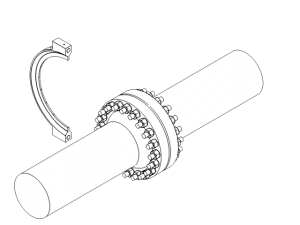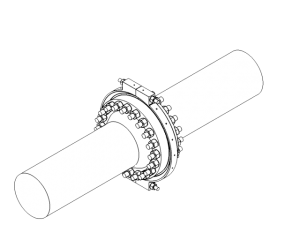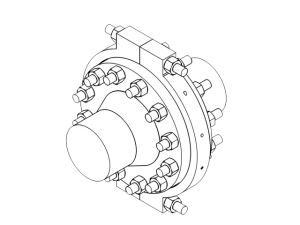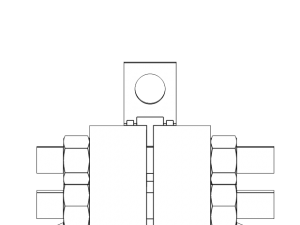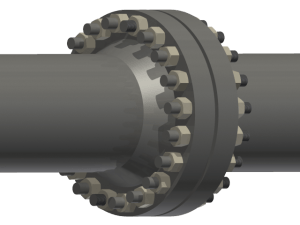 EngRx Bolted Flange and Bonnet Leaks Solutions
EngRx Bolted Flange and Bonnet Leaks Solutions
One of the most common leakage paths is through a failed gasket.
EngRx has designed hundreds of leak repair fittings to solve flange and valve bonnet leaks. Process leakage from flanges and valve bonnet are among the most common type. The common cause of these leaks is:
- Damaged gaskets or gasket faces (warped, scored, corroded, etc.)
- Improper flange joint assembly
- Thermal cycling
- Vibration and dynamic forces
- Inadequate stud preload
Most flange leaks are sealed using a mechanical Leak Sealing enclosure that encapsulates the flange “gap” void using a Tongue Clamp, or alternatively using a Peripheral Clamp that lands on both flange OD’s. A Tongue Clamp is a more localized solution as it seats only into the flange gap. The leak sealing compound (“sealant”) is injected into the encapsulated void volume, including the stud cavities, through the Tongue Clamp OD. Peening the flange OD to the tongue clamp is commonly practiced to achieve a mechanical seal between the Tongue Clamp and the flanges. In cases where a narrow flange gap exists (less the 1/4″, 6.4mm), the installer may need to consider alternative injection routes such as: drilling ports through the flange, Injection Rings and Cap Nuts. These alternatives are often costly or deleterious, and the Peripheral Clamp is chosen to seal the leak. A Peripheral Clamp (often referred to as a “Channel Clamp” or “Flange OD Clamp”) lands on the flange OD’s and provides an effective means of injecting the flange gap and stud cavities. Injection compound ports are most commonly designed through the clamp outside shell. Flange mismatch is an important consideration in the proper fit of the Peripheral Clamp. Peening is normally not practiced with Peripheral Clamps as mechanical seals such as packing or crush tubing are designed to seal on the flange OD’s.
EngRx will assist with the proper selection and engineering of your flange Leak Sealing Enclosure. Difficult field measurement involving: obstructions, flange mismatch and even pre-existing direct mounted injectors can be tackled using our 3D Laser Scanning services. The 3D Laser Scan will provide a precise solution to inaccurate field measurements resulting in improper Leak Sealing Enclosure seal fits.

